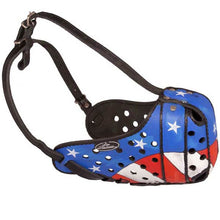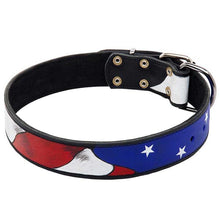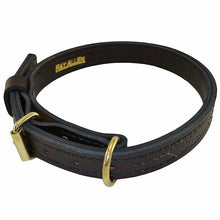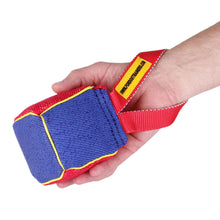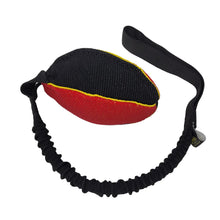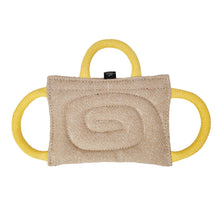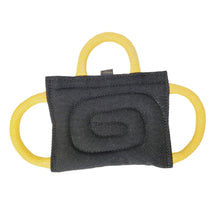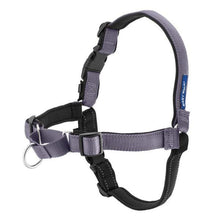German Shepherd Allergies: Identifying And Managing Common Allergic Reactions In Dogs

Allergies in German shepherds can be a frustrating problem. Depending upon the severity, they can mean misery for the dog and challenging to get under control. Yet, despite the difficulty, there are some things you can do to help.
Just like people, dogs can be allergic to almost anything. This can make their triggers hard to narrow down. One of the first things many owners do is switch the protein in their food or try a grain-free diet in hopes it will ease their dog’s symptoms.
Sometimes they get lucky and this works. However, most often it doesn’t. There are many reasons for this including cross-contamination of ingredients, processing methods, and the fact that environmental allergies are more common than food allergies and that proteins are more common allergens than grains. Allergies can also be seasonal meaning symptoms can come and go so sometimes the food gets blamed.

Some common environmental allergens include:
• Pollen
• Molds
• Insect bites
• Fleas and ticks
• Dust and dust mites
• Cleaning products
• Grass and weeds
Some common food allergens include:
• Chicken
• Beef
• Eggs
• Dairy
• Wheat
• Corn
• Soy
A dog can become sensitized or allergic to any type of protein and occasionally carbohydrates. They may even be allergic to more than one type of food. Or they can be sensitive to an ingredient used in making the food.
To make matters more complicated, food allergies can present like environmental allergies. Vomiting or diarrhea is not always caused by food allergies, although they can be. Some common allergy symptoms include:
• Skin infections
• Ear infections
• Gastrointestinal problems
• Itchy body
• Red, itchy paws
• Hot spots
• Itchy eyes
• Runny nose
• Sneezing
• Wheezing
• Hives

When a dog has allergies, one of the first things a vet will usually suggest is a food elimination trial. In the trial, the dog will usually eat a prescription diet consisting of a protein they haven’t eaten before for about 8 weeks.
During this time, the dog cannot eat any non-approved treats or commercial foods to prevent them from ingesting what is triggering their allergies. Since most commercial foods are manufactured in such a way that they cross-contaminate proteins, it’s best to stick with the prescription diet, except when feeding a homemade recipe from the vet.
Depending on how the dog does by the end of 8 weeks, the vet may have the dog continue to eat the diet while slowly reintroducing specific ingredients one at a time to see if there is a flare-up. If there’s no improvement during the food trial, the dog may have environmental allergies and skin allergy testing may be the next step.
Environmental allergies are triggered when the sensitized dog comes in contact with something they are sensitized to. This causes their immune system to react to something in the environment that would otherwise be harmless. This contact triggers the allergic reaction, itching, redness, ear infection, and so on.

Although it may be impossible to eliminate all environmental allergy triggers, there are some things you can do to help support the immune system, ease their symptoms, and improve the quality of their life, including:
Feed a high-quality balanced diet to prevent deficiencies
Feed a high-quality diet for the life stage of your dog. Even if your dog doesn’t improve during a food trial, you may want to try a different type of diet to see if there is improvement. For example, some dogs just do better eating a particular brand or eating a diet that is manufactured differently, such as a sensitive skin and stomach formula, wet, freeze-dried, or fresh diet.
Add toppers to support the immune system
You can also add fresh seasonal foods into their diet to help reduce inflammation, such as gently cooked or pureed carrots, sweet mini peppers, sweet potatoes, broccoli, pumpkin, zucchini, yellow squash, green beans, and spinach. A small amount of fruits, such as blueberries, apples, cranberries, cantaloupe, etc. Homemade no sodium bone broth, no sodium sardines in water, and eggs. A good rule of thumb when feeding toppers is to keep calories from around 10-15% of their daily caloric intake.

Omega 3’s
Omega-3 fatty acids help with allergy-prone skin by reducing inflammation and strengthening the skin barrier. When you improve skin condition and boost the immune system, it helps protect against and minimize allergic reactions. Omegas 3’s such as the Natural Dog Company Wild Alaskan Salmon Oil are also good for the heart and can improve joint health.
Quercetin
Quercetin can reduce histamine production and help control inflammation. It is found in many supplements created to help reduce the systems in allergy dogs, as well as people. Quercetin is an antioxidant that belongs to a group of plant pigments called flavonoids that give many fruits, flowers, and vegetables their colors.
Colostrum
Colostrum is another supplement that helps boost the immune system. Colostrum is anti-inflammatory and contains immunomodulatory properties that may prevent subsequent sensitizations, which may be beneficial in allergy-prone dogs. Supplements such as the Natural Dog Company Aller-Immune chews contain colostrum as well as other ingredients to support the well-being of dogs suffering from allergies.
Probiotics and digestive enzymes
Probiotics and digestive enzymes help balance a dog’s natural gut biome and improve overall health. Studies suggest that they improve digestion, decrease inflammation, ease arthritis pain, and may reduce symptoms of digestive disorders.

Reduce household allergens
Try reducing dust, washing pet bedding more often, and washing dog toys. If you use scents or fabric softeners, etc., try using unscented products on anything your dog spends time on and see if that helps. Get rid of air fresheners and try washing floors in hypoallergenic solutions for a few months to see if it helps.
Bath your dog to remove allergens
Try bathing your dog after exposure to allergens. By using a 100% natural and hypoallergenic shampoo that’s created to balance, heal, and soothe irritated skin, you can safely remove environmental irritants without drying out sensitive skin. The Natural Dog Company Itchy Dog Shampoo is also great for hot spots and soothing insect bites.
Use wipes between baths
It’s impossible to bath your dog every day but wiping off the face, ears, and paws after spending time outside can help remove some of the pesky allergens and reduce what’s tracked through your home. The Natural Dog Company’s Grooming Wipes are non-medicated but help soothe irritated skin and are biodegradable.
Soothing foot soaks
Foot soaks will help remove irritants and soothe inflamed paws. Try soaking paws in baking soda, Epson salt, or povidone-iodine and water for about 5 minutes before bedtime then pat dry.
• Baking soda solution: Add 1-2 tablespoons of baking soda to 1 gallon of warm water.
• Epsom salt solution: Dissolve about 1 cup Epson salt in 1 gallon water.
• Povidone Iodine solution: Dilute about 2-3 tablespoons of povidone-iodine in a gallon of water so that is the color of tea.

See your vet
If your dog is suffering, talk to your vet. Some over-the-counter and prescription medications can help reduce symptoms so that your dog is more comfortable. Secondary infections often accompany uncontrolled allergies so it’s wise to get help when your pet needs it. Never give your dog decongestants, Sudafed, or allergy medication with a D on the label, such as Claritin D, because they are highly toxic.
Food storage
Some dogs are allergic to mites that can live on dry food and not the food itself. To help prevent this, make sure bags are free from holes. Keep food in the original bag and store the bag containing the food in an airtight container.
To prevent air from constantly getting in contact with the food, remove a week's supply at a time and store it in a zip-lock bag. Keep all food in a cool location and away from moisture to prevent mold. Don’t buy more food than your dog can eat in a month once opened.
Don’t expect instant results
It can take weeks for a dog to stop itching after an allergen is removed. That is one reason why food elimination trials are performed for 8 weeks. As long as your dog isn’t getting worse, support them as best you can naturally and with medication if needed.
We hope these tips help you keep your allergy dog more comfortable. As always, please feel free to share with your friends.
You might also like: Solving Skin Irritation, Hot Spots, And Yeast




